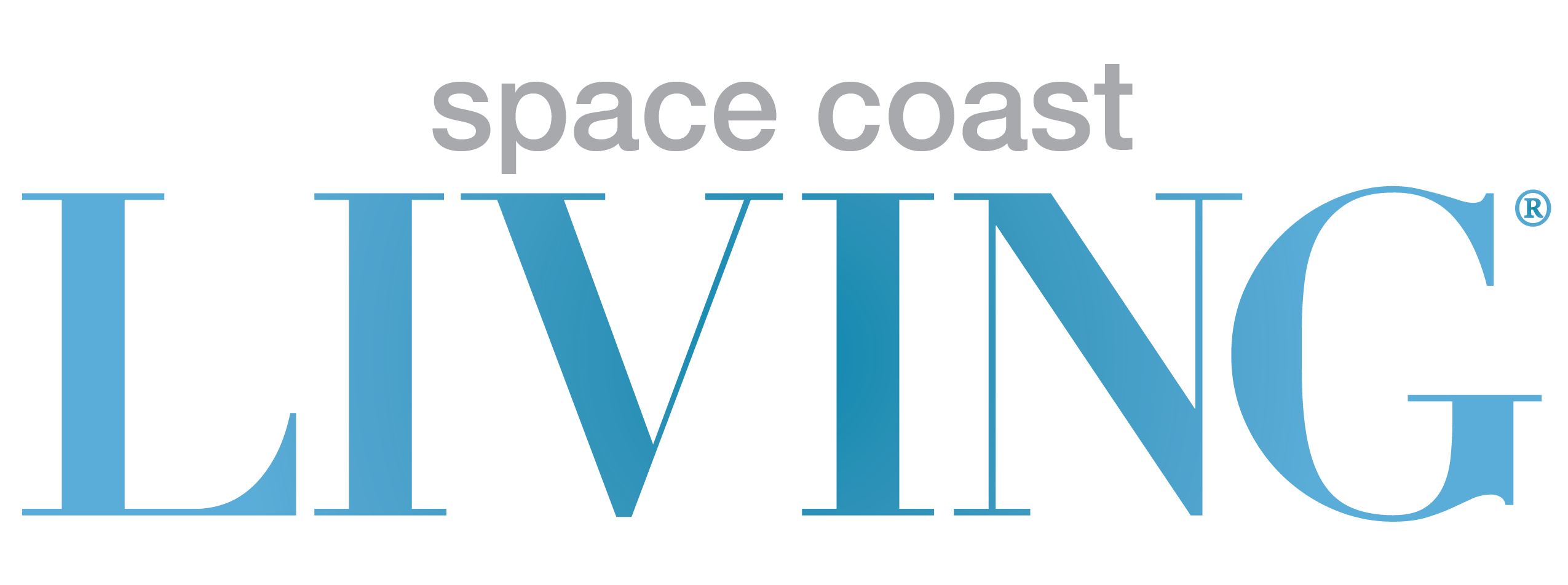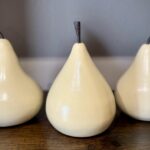Going native
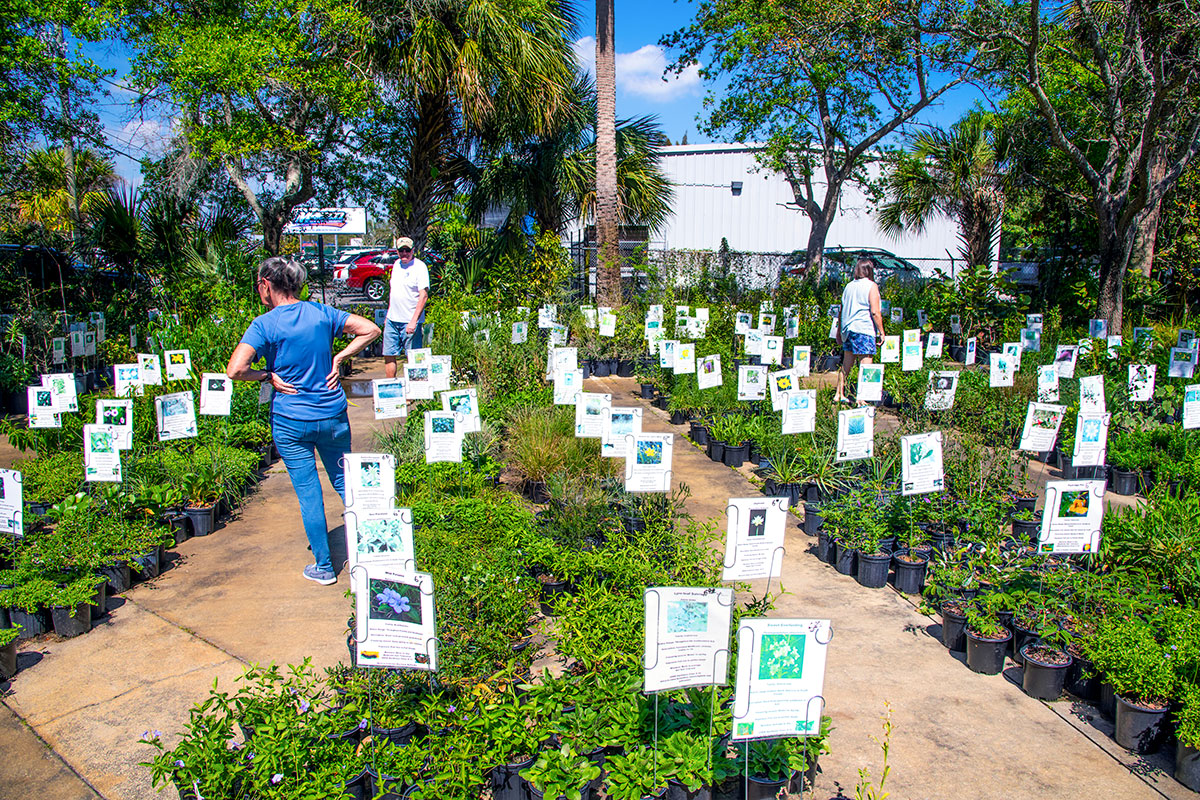
Native Butterfly Flowers deals exclusively in native plants and has 250 species of natives at its nursery in West Melbourne. FRED MAYS
Gardeners are choosing more plants that are friendly to the environment
In recent years there has been a booming interest in Florida native plants. What’s the attraction? First off, they require little maintenance. There’s some TLC when they are first planted, but after that they don’t require fertilizer, trimming and very little watering. During a prolonged dry spell you may need to hit them with the garden hose, but that’s about it. And they are also generally cheaper than ornamental landscaping.
Native plants attract migratory birds, bees and other pollinators, and butterflies. They are an important link in nature’s chain of life.
Brevard landscape architect Susan Hall says there is huge interest from her customers in using native plants in both residential and commercial settings.
“We’ve had 100 percent native projects.”
She says a lot of interest is driven by local building codes in some communities that require a certain percentage of natives on a property. For example, the beach town of Indialantic requires commercial properties, including condos and apartments, to have a majority of native plants in their landscaping. “A lot of people don’t know what’s native or not, they just want them,” Hall says.
According to Andreas Daehnick, director of horticulture at McKee Botanical Garden in Vero Beach, more than half the plants at the garden are natives.
“It’s important to put the right plant in the right place for them to do well,” he says. Once planted, they require little attention. “We don’t go around fertilizing and pruning.”
Property overlooking the Indian River Lagoon features native plant landscaping. CARL WEINBERGER
INTEREST IS GROWING
Sally Scalera is the horticulture agent and master gardener at the University of Florida agriculture branch in Cocoa. She says interest in native plants is booming. “People are concerned about the lagoon,” she observes. Because native plants don’t require fertilizer means they help reduce the amount of phosphates that drain into the lagoon and cause algae blooms.
There are more than 3,000 species of native plants in Florida. Some plants prefer the cooler weather of North Florida, others like the hot, balmy sub tropics farther south. Plants that work well in North Florida generally don’t do well on the Space Coast and Treasure Coast.
Scalera says Brevard County is divided into two growing regions. The coastal areas are warmer and friendlier to trees and plants that cannot tolerate the cold, such as frangipani and coconut palms. Areas inland from the beaches are a different region and are better for plants that can tolerate cooler weather. She repeats the axiom of gardening pros about making sure to put the right plants in the right place.
She says when selecting plants you should consider a number of factors. Are they drought tolerant, do they like full sun or partial shade, what kind of moisture in the soil works best? She calls native plants a keystone species and you can visit the university’s website [http://www.nwf.org/NativePlantFinder] for a list and more information.
Scalera conducts an eight-session Florida Friendly gardening class each spring, and native plants are included in the course. If you don’t want or can’t spend that much time, a master gardener from the university’s Cocoa office will come to your home to evaluate your yard and give you planting recommendations for your specific location. The cost is $55.
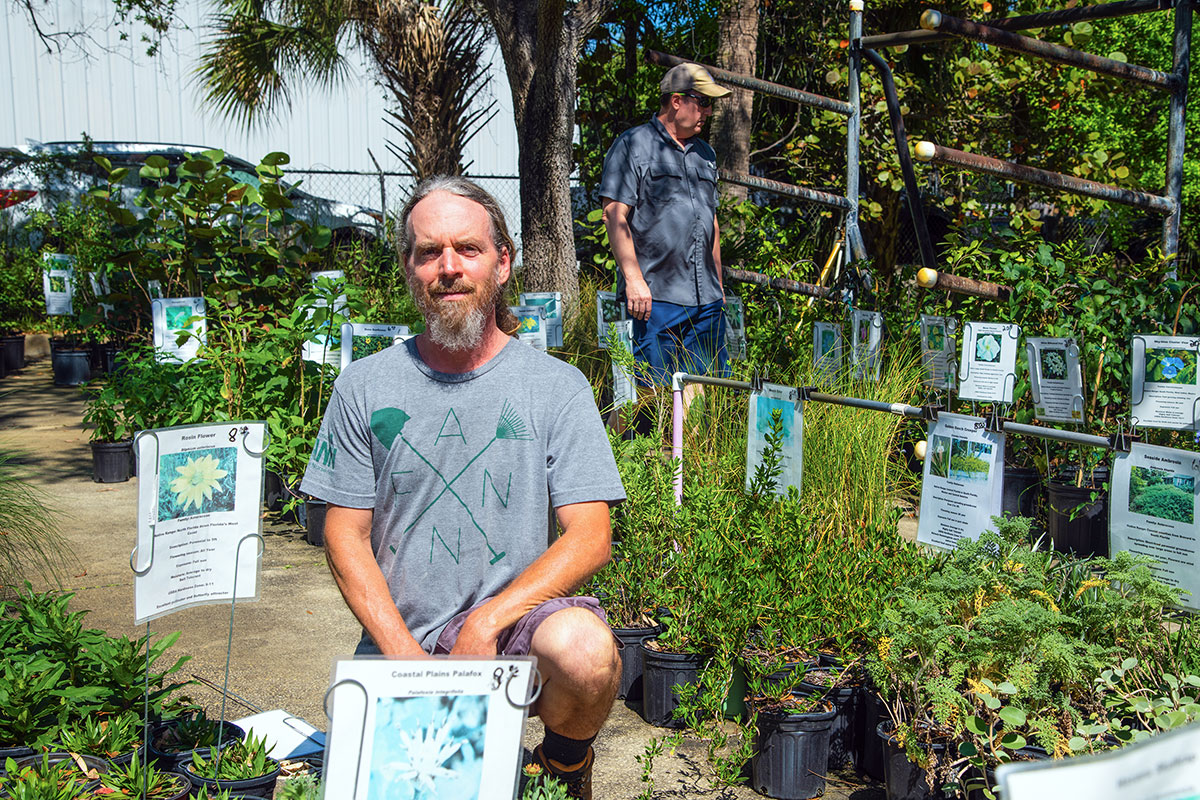
Tim Harrison, a native plant landscaper, opened Native Butterfly Flowers with his wife, Anna, in 2015. They have 250 species of natives at their nursery in Palm Bay.
RIGHT PLANT FOR RIGHT PLACE
Tim and Anna Harrison have operated Native Butterfly Flowers, a nursery and landscaping business, since 2015. They deal exclusively in native plants and have 250 species of natives at their nursery in Palm Bay and retail store in West Melbourne.
Harrison says an important consideration before planting is the quality of the soil. Often builders bring in clay and fill dirt to put around new houses and not all native plants like that kind of soil. That means having to use only certain plants in those areas. Where the original natural Florida sandy soil exists, he says, all plants do well. “It’s all about putting the right plants in the right places,” he explains.
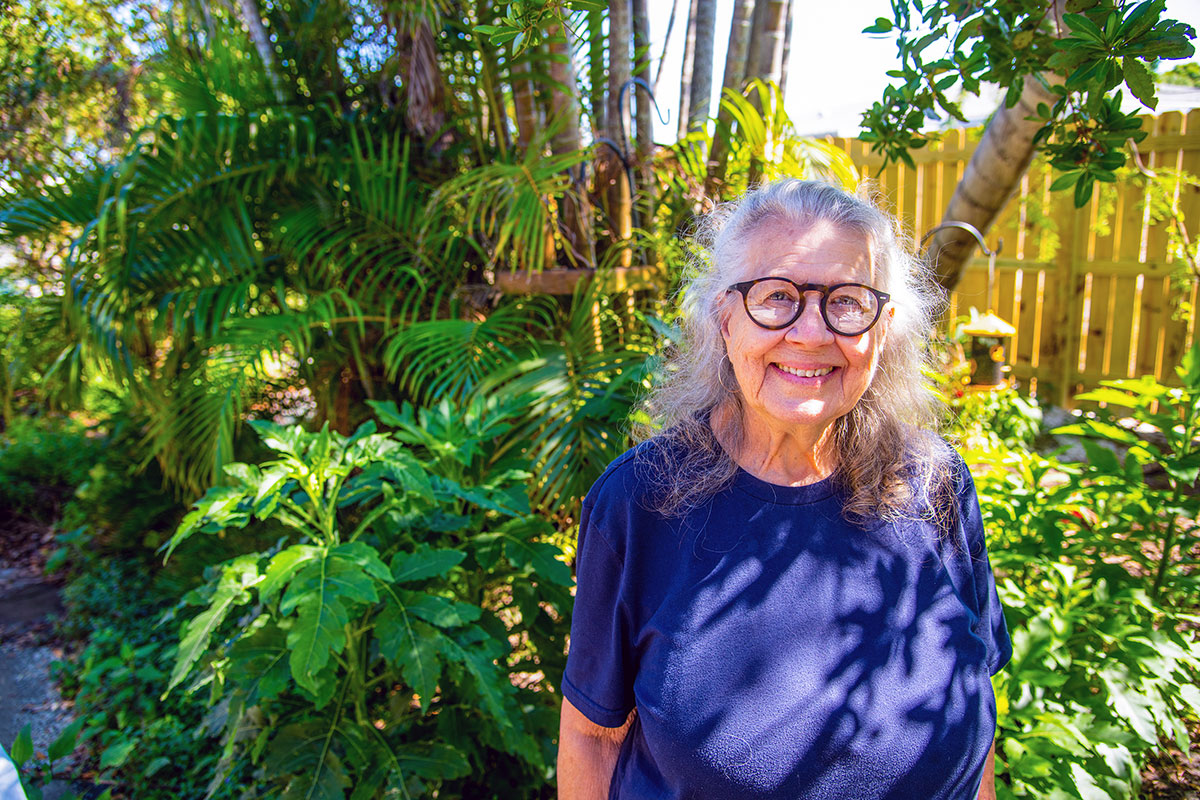
Viki Wylder of Palm Bay has a backyard filled with more than 60 species of native plants. She and her husband enjoy the low-maintenance greenery.
Native Butterfly Flowers customers Viki and Tom Wylder of Palm Bay have a backyard full of more than 60 species of native plants. They like the way the plants don’t require a lot of attention.
“We’re in our 70s and don’t want a lot of maintenance,” Viki Wylder says. “We also want to help the lagoon by not using fertilizer.” She says the backyard attracts birds, butterflies, turtles, and even an opossum.
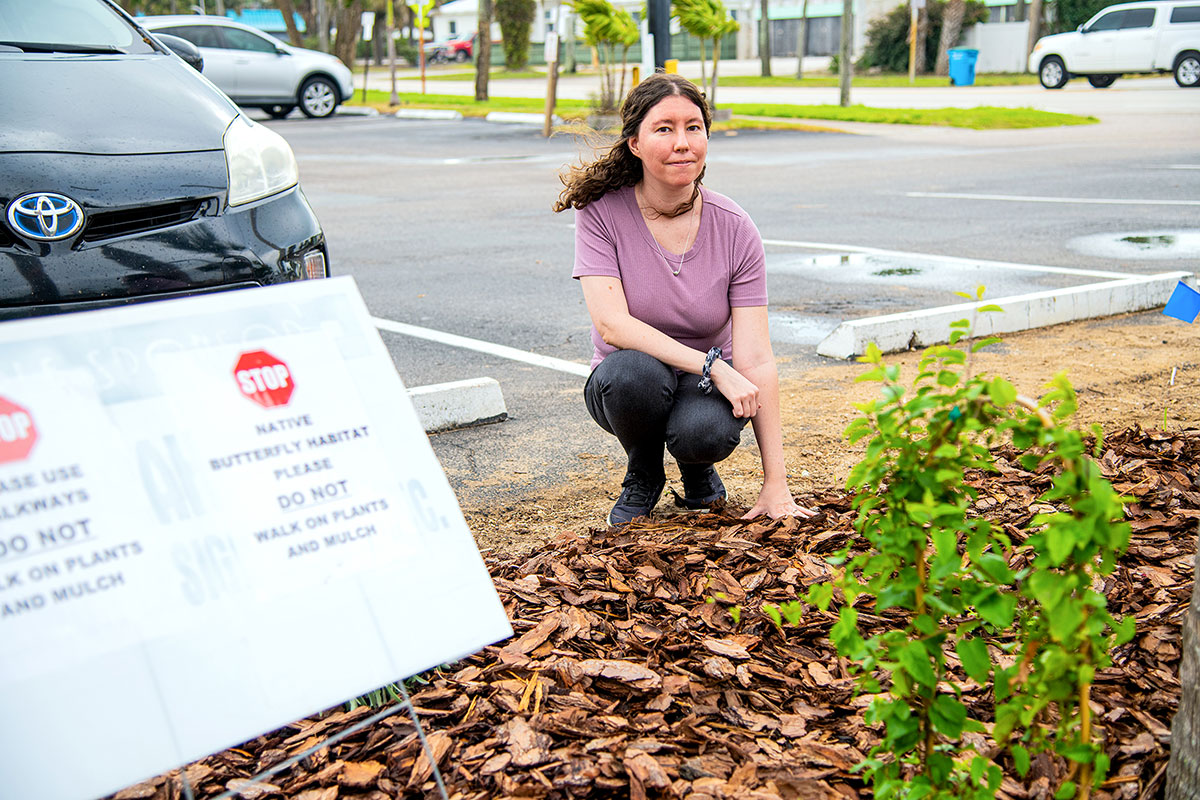
Melbourne Beach Public library director Ashley Link looks over new plantings that will be a butterfly garden when the plants mature. FRED MAYS
Not all native plants projects are big. On the smaller scale, the Melbourne Beach library created a native plant garden in a 9-by-120-foot space along the parking lot, in front of the building on Ocean Drive. Library director Ashley Link says it’s intended to be a butterfly garden when the plants mature.
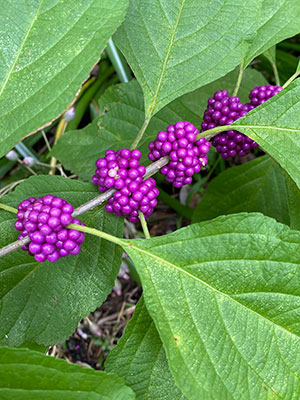
Beautyberry bushes grow from 3 to 12 feet tall and produce clusters of small violet fruits. They’re used for decorative purposes and in traditional Chinese medicine for the treatment of inflammation and bleeding disorders. Research suggests they may have antiviral and antibacterial benefits. CARL WEINBERGER
PROMOTING NATIVE PLANTS
The Florida Native Plant Society [www.fnps.org] was formed to promote the preservation, conservation and restoration of the native plants at communities around the state. There are chapters in many counties, including those on the Space Coast and Treasure Coast. Chapters hold regular meetings and workshops and membership is open to anyone interested in native plants.
The Conradina Chapter in South Brevard conducts an annual tour on the best use of native plants. The tour has been going on since 2010, and Jane Higgens, chapter treasurer, says it always attracts a lot of interest. Last year, 350 people signed up.
The tour takes place in October and is self-guided. The chapter picked seven stops for 2023, mostly in the Satellite Beach area. Tour stops show off native plantings and are made on recommendations from local nurseries and landscapers. For more information, go to brevardlandscapetour.org. Registration opens in June or July.
The North Brevard Sea Rocket chapter conducts hikes around native plant locations several times a year that are led by Paul Schmalzer, a plant ecologist from the University of Central Florida. The public is invited and can get details on the chapter’s website. Several times a year, in spring and fall, the group holds native plant sales at the Enchanted Forest nature area in Titusville.
The native plant chapter for Martin and St. Lucie counties holds meetings in the fall and spring. Chapter chairman Greg Braun says each month has a theme and the meetings are followed by field trips to native plant locations. Braun says the on-going mission of the chapter “is getting people to mow less” by reducing the amount of grass in their yards, and replacing grass with native plants.
Native plants are popular and make good sense. They save money on irrigation and fertilizer. They require less maintenance. They are good for the environment and the Indian River Lagoon. And they are generally cheaper than more traditional ornamental landscaping. For more information, contact the local Native Plant Society chapter.
For more information …
Florida Native Plant Society
www.fnps.org or email info@fnps.org
321.271.6702
North Brevard
Sea Rocket Native Plant Chapter
Meets monthly [check website for details]
Enchanted Forest Sanctuary
444 Columbia Blvd.,Titusville
https://searocket.fnpschapters.org
South Brevard
Conradina Native Plant Chapter
Meets the second Monday, 5:30 p.m.
Melbourne Library
540 East Fee Ave., Melbourne
https://conradina.fnpschapters.org
Indian River County
Eugenia Chapter
Meets the third Thursday, 7 p.m.
Florida Medical Entomology Laboratory
200 Ninth St. SE, Vero Beach
https://ircnativeplants.org
Martin/St. Lucie Counties
Meets the first Wednesday, 6:30 p.m. [October-April]
Wolf High Technology Center
Indian River State College
2400 SE Salerno Road, Stuart
https://martincounty.fnpschapters.org
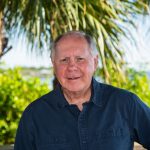
Fred Mays
Fred Mays is a freelance writer and photographer who resides in Satellite Beach. He is a retired television journalist, and active on media issues with the Brevard Indian River Lagoon Coalition. His blog is www.floridaunplugged.net.
